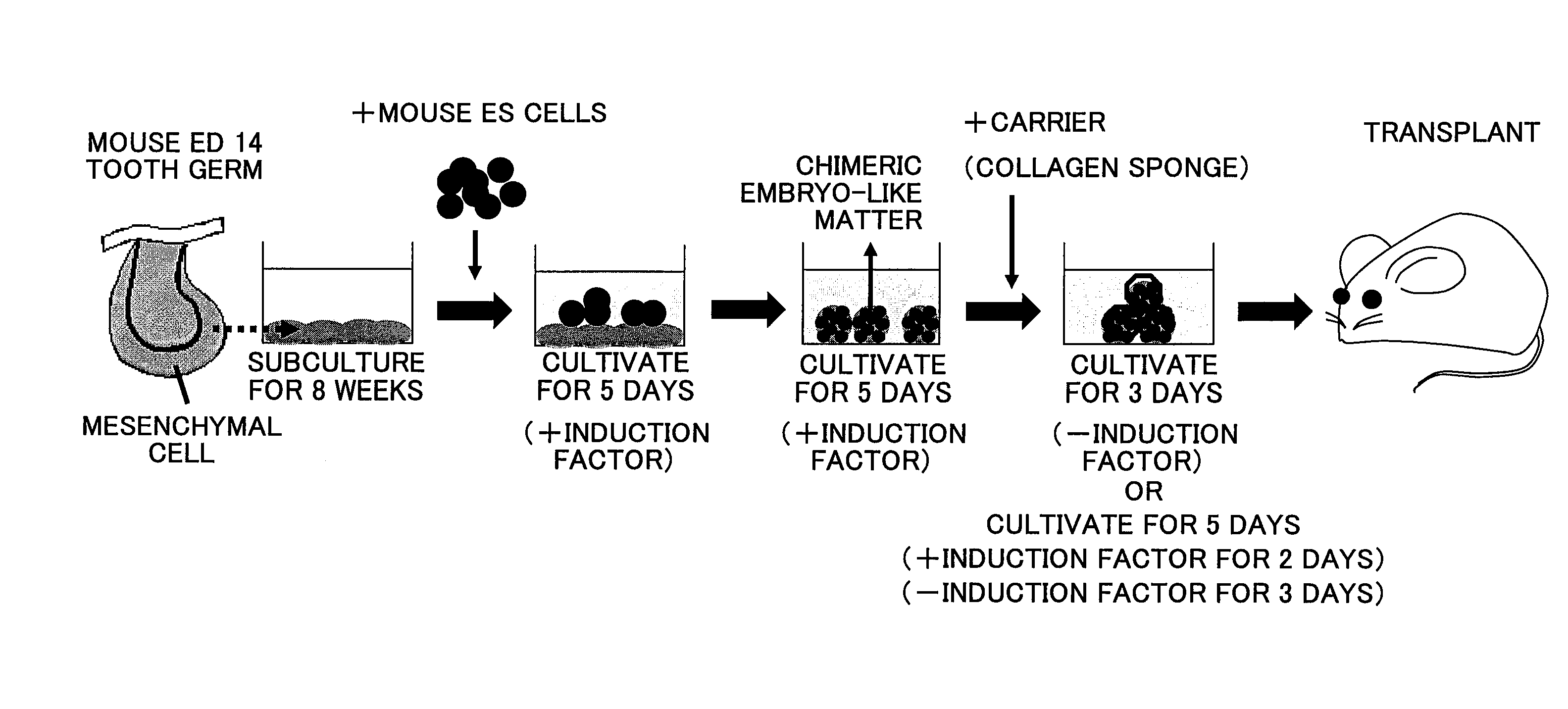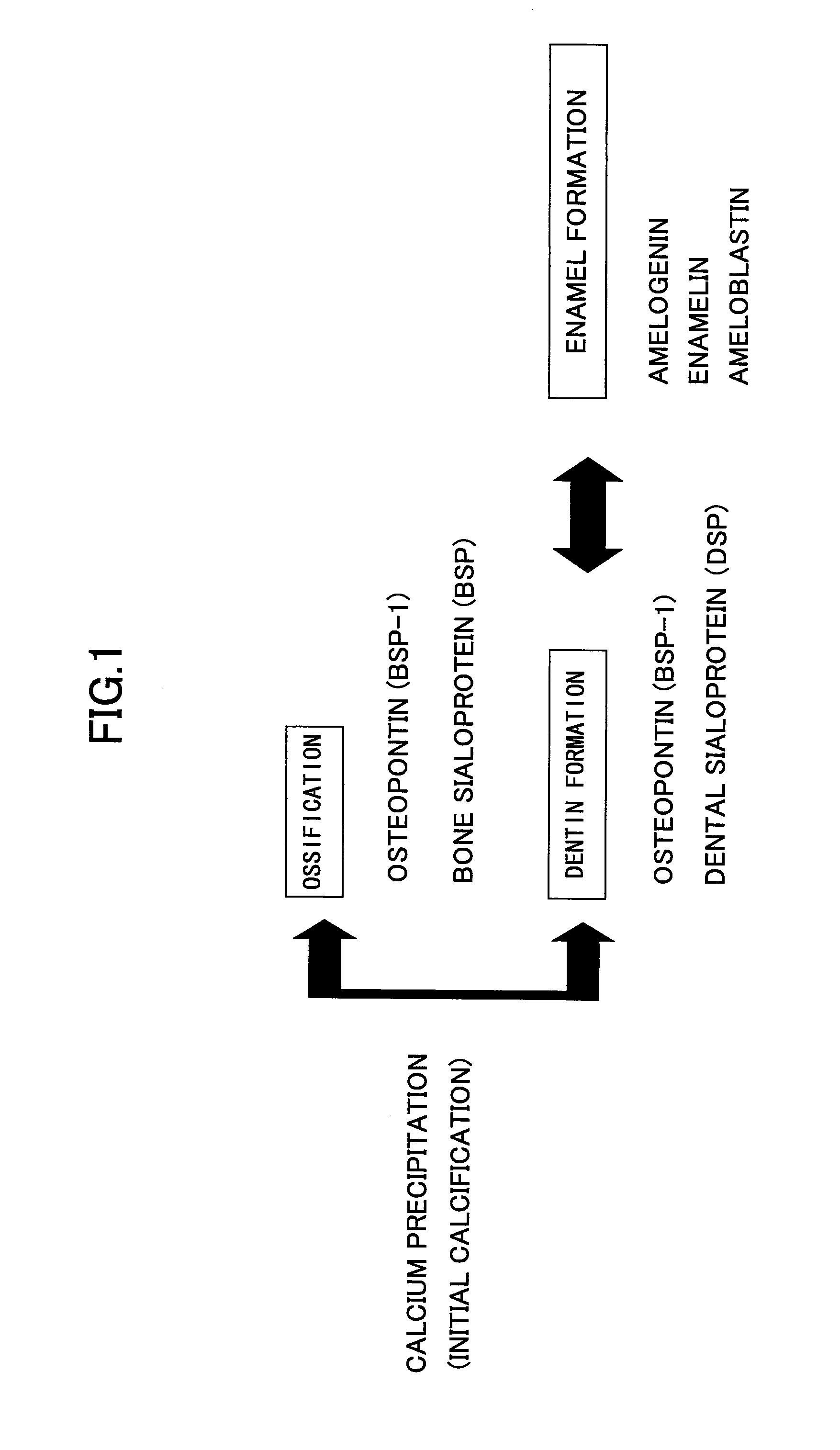Tooth Regeneration Method
a tooth and tooth germ technology, applied in the field of tooth regeneration methods, can solve the problems of difficult for dental epithelial cells to develop into stable cell lines independently on their own, and the tooth germ itself, the dental epithelium, cannot achieve complete tooth regeneration
- Summary
- Abstract
- Description
- Claims
- Application Information
AI Technical Summary
Benefits of technology
Problems solved by technology
Method used
Image
Examples
Embodiment Construction
[0053]In the following, one preferred embodiment of the present invention is described; however, the present invention is by no way limited to such an embodiment.
[0054]An embodiment of the present invention relates to a novel method of forming a tooth in a mammal that involves producing a chimera embryoid body using an undifferentiated cell, which may be any stem cell including an embryonic stem cell (referred to as ‘ES cell’ hereinafter) that is capable of differentiating into various types of cells and tissues, and a dental mesenchymal cell, and then cultivating the chimera embryoid body on a three-dimensional matrix. It is noted that co-cultivating an ES cell with tissue derived from a living body has been known. However, a method of producing a chimera embryoid body by co-cultivating an ES cell and another cell as in the present embodiment much less techniques involving the use of the chimera embryoid body produced by such a method are not known.
[0055]Specifically, a method of f...
PUM
| Property | Measurement | Unit |
|---|---|---|
| diameter | aaaaa | aaaaa |
| hardness | aaaaa | aaaaa |
| cavity resistance | aaaaa | aaaaa |
Abstract
Description
Claims
Application Information
 Login to View More
Login to View More - R&D
- Intellectual Property
- Life Sciences
- Materials
- Tech Scout
- Unparalleled Data Quality
- Higher Quality Content
- 60% Fewer Hallucinations
Browse by: Latest US Patents, China's latest patents, Technical Efficacy Thesaurus, Application Domain, Technology Topic, Popular Technical Reports.
© 2025 PatSnap. All rights reserved.Legal|Privacy policy|Modern Slavery Act Transparency Statement|Sitemap|About US| Contact US: help@patsnap.com



